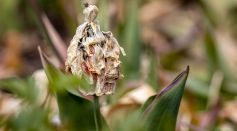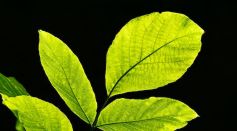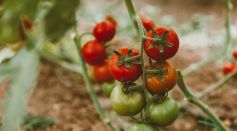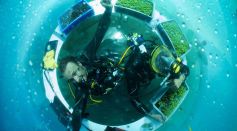Tags: Plants

Ancient Humans Ate More Plants Than Meat, Study Reveals
Wild Chimpanzees in Uganda Self-Medicate by Consuming Plants With Pain-Relieving, Anti-Bacterial Properties
![Plants Possess a Form of Intelligence and Are Capable of Solving Problems [Study]](https://d.sciencetimes.com/en/full/54304/plants-possess-form-intelligence-are-capable-solving-problems-study.jpg?w=237&h=131&f=80b85a0702290069818327742f085150)
Plants Possess a Form of Intelligence and Are Capable of Solving Problems [Study]

Can Plants Die of Old Age? How Long Can They Live?

Plant Virus Found To Combat Metastatic Mouse Cancers Effectively, Offering Hope For Similar Potential in Humans
Moon Farming: NASA's LEAF Experiment Will Attempt To Grow Plants on the Lunar Surface for Future Space Missions
City Dwellers Possess Less Gut Bacteria That Break Down Cellulose, Affecting Their Ability To Digest Plants
Plants Found in Goliath’s Biblical Home Offers New Insights About Philistine Culture, Ritual Practices [Study]

Chickpeas Grown on Moondust For the First Time, Unlocking Doors to Food Production For Lunar Missions in the Future

Deadliest Plants in the World: Be Sure To Steer Clear of These Plants

Why Is Photosynthesis Important?

Flowering Plants Thrived After Dinosaur Extinction 66 Million Years Ago, Study Reveals
South African Succulent 'Baby's Bum': A Cheeky Delight in the World of Plants

Prehistoric Chili Pepper Fossils Challenge Tomato Plant's Evolutionary History, Study Says

Stressed Plants Cry, Make Sounds, Scientists Say; But Can Animals Hear Them?

Grace Breeding’s NFT Outperforms Standard Nitrogen Fertilizers While Reducing Carbon Emissions, Brazil Corn Study Shows

Breathtaking Biospheres Houses a Vegetable Garden Grown 25 Feet Underwater

Minishocks in Plants Due to Thunderstorms Can Affect Hydroxyl Radicals, Altering Air Quality

New Species of Great Water Lily Discovered, Hid in Plain Sight for More Than 170 Years

Orchid Species Thought Extinct For More Than a Century Rediscovered in Vermont
Most Popular

Will Earth's Magnetic Poles Flip Next? Magnetic Pole Reversal Explained Through Cutting‑Edge Magnetosphere Science

How Lightning Science Reveals Why Charged Storms Are Rising with Global Warming Effects

Relativity Time Dilation Explained: The Physics of Time and Why It Moves Differently in Space

De-Extinction vs. Conservation Science: Which Approach Protects Biodiversity Most Effectively?





